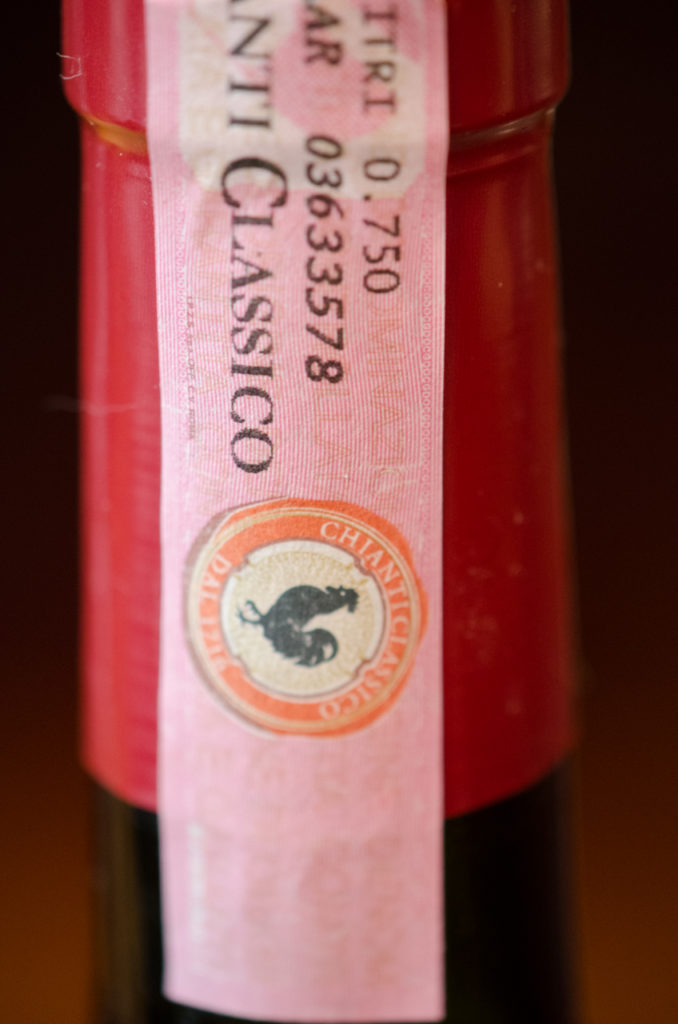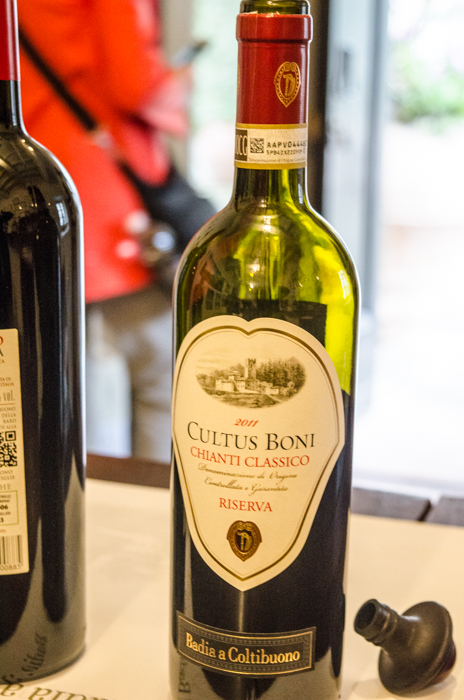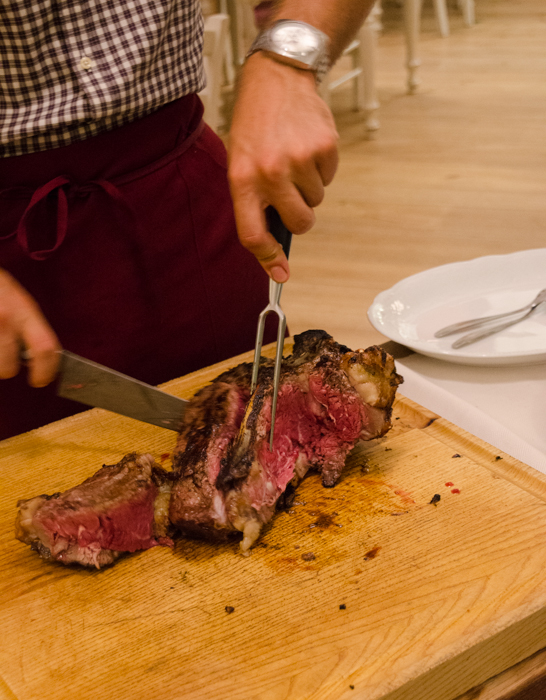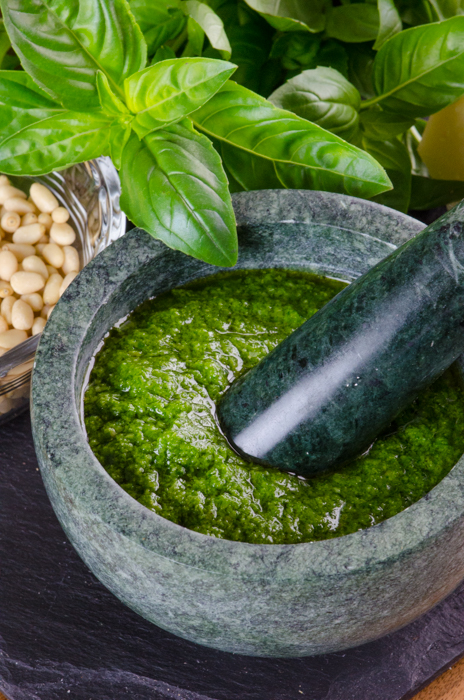 We are introducing a new Italiaoutdoors walking adventure to Liguria and Cinque Terre. Also known as the Italian Riviera, this is one of the most breathtaking coastlines in the world. Here, the sea and the mountains meet in dramatic fashion, and we spend a week exploring the fascinating history, indigenous wines, and traditional cuisine of the area among one of the most stunning backdrops in Italy.
We are introducing a new Italiaoutdoors walking adventure to Liguria and Cinque Terre. Also known as the Italian Riviera, this is one of the most breathtaking coastlines in the world. Here, the sea and the mountains meet in dramatic fashion, and we spend a week exploring the fascinating history, indigenous wines, and traditional cuisine of the area among one of the most stunning backdrops in Italy.
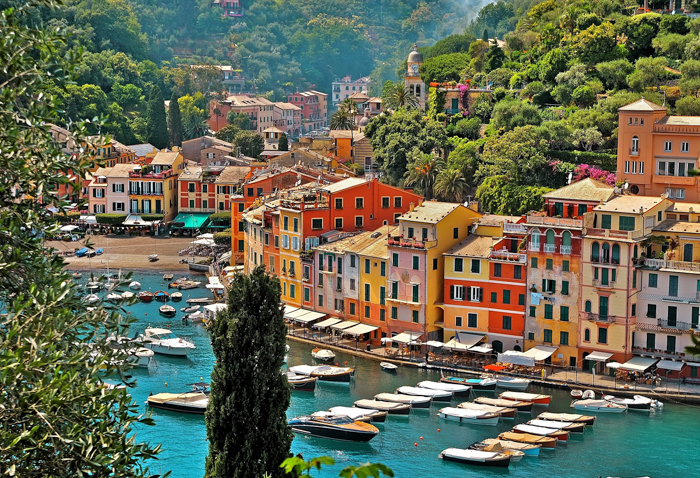 Probably the greatest gift of the Ligurian region to the culinary universe is its pride and joy – Pesto alla Genovese. Most Americans today are familiar with pesto, which originated in Genoa. The word ‘pesto’ derives from the Italian word “pestare”, which means to pound or crush. Traditionally, a pesto would be made using a mortar and pestle, with the ingredients being ‘ground’ with a circular motion of the pesto.
Probably the greatest gift of the Ligurian region to the culinary universe is its pride and joy – Pesto alla Genovese. Most Americans today are familiar with pesto, which originated in Genoa. The word ‘pesto’ derives from the Italian word “pestare”, which means to pound or crush. Traditionally, a pesto would be made using a mortar and pestle, with the ingredients being ‘ground’ with a circular motion of the pesto.
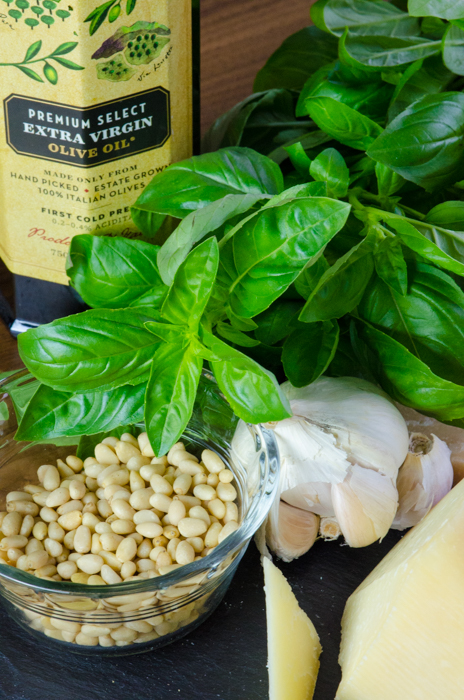 To a Ligurian, pesto requires very specific ingredients – light Ligurian DOP olive oil, Riviera pine nuts, fresh garlic from Vessalico (in western Liguria, near the French border) , sea salt, a 50-50 blend of Percorino sardo cheese from Sardinia (Sardo is richer while Pecorino Romano is more salty) and true Parmigiano-Reggiano, all combined with tender shade-grown basil. The traditional technique for making pesto utilizes a marble mortar and an olive wood pestle, the grinding releases the herb’s oils and maximum flavor and produces the preferred crushed texture. The cutting action of the food processor is believed to cut off the plants capillaries and prevents the fullest release of flavor. Today, however, finding pesto made using a mortar is rare indeed.
To a Ligurian, pesto requires very specific ingredients – light Ligurian DOP olive oil, Riviera pine nuts, fresh garlic from Vessalico (in western Liguria, near the French border) , sea salt, a 50-50 blend of Percorino sardo cheese from Sardinia (Sardo is richer while Pecorino Romano is more salty) and true Parmigiano-Reggiano, all combined with tender shade-grown basil. The traditional technique for making pesto utilizes a marble mortar and an olive wood pestle, the grinding releases the herb’s oils and maximum flavor and produces the preferred crushed texture. The cutting action of the food processor is believed to cut off the plants capillaries and prevents the fullest release of flavor. Today, however, finding pesto made using a mortar is rare indeed.
Outside the city of Genoa, the suburb of Prà produces what the locals consider the best basil for pesto. Here it is grown not in fields but in greenhouses, as Ligurians prefer greenhouse basil over that grown under direct sun, as the latter results in basil that is darker in color and tough. These greenhouse growers annually produce over 5 million plants.
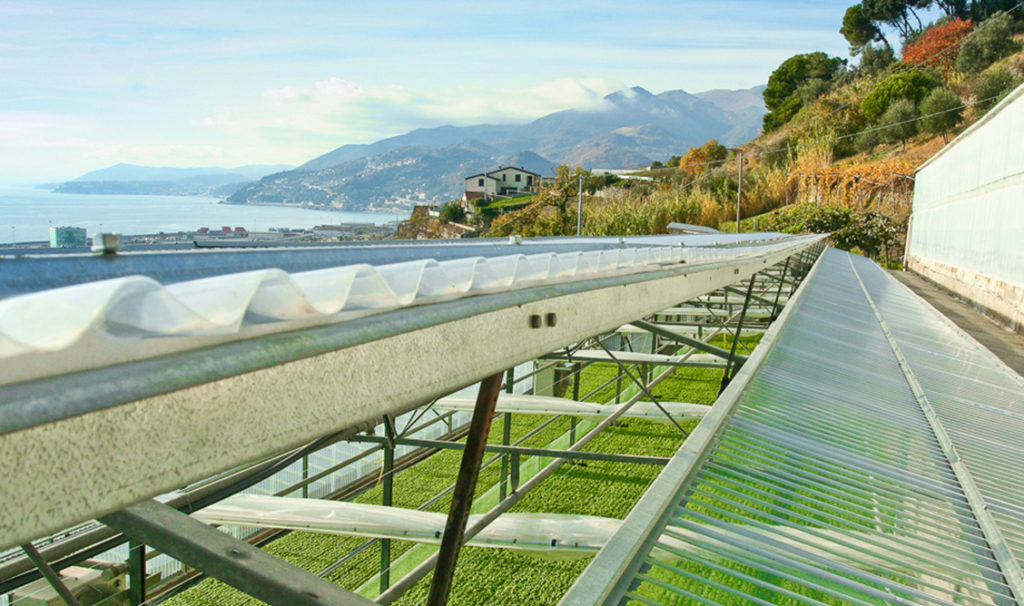 Why Prà? The same Genovese basil seed is now distributed world wide, and grown as far away as California. The microclimate around Prà is believed to be responsible for the quality – neutral soil, a southern exposure that gets sunny days year round, Mediterranean breezes keep the area cool so the basil doesn’t overheat and oxidize. The Italian government actually conducted experiments in which the same basil seeds were planted elsewhere – the result was a thicker stem, darker color, and more minty flavor. Today, the basil from Prà and nearby on the Ligurian coast has earned DOP status, recognizing the unique quality of the product.
Why Prà? The same Genovese basil seed is now distributed world wide, and grown as far away as California. The microclimate around Prà is believed to be responsible for the quality – neutral soil, a southern exposure that gets sunny days year round, Mediterranean breezes keep the area cool so the basil doesn’t overheat and oxidize. The Italian government actually conducted experiments in which the same basil seeds were planted elsewhere – the result was a thicker stem, darker color, and more minty flavor. Today, the basil from Prà and nearby on the Ligurian coast has earned DOP status, recognizing the unique quality of the product.
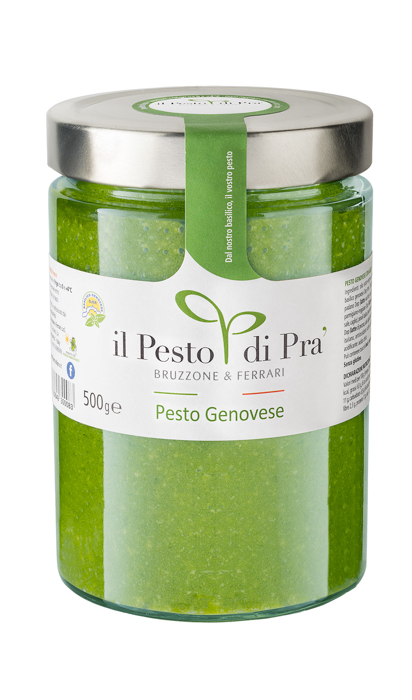 It is rare to find pesto in your grocery store that hails from Liguria. The largest pesto production facilities are actually in Japan and Denmark, and you can be pretty sure that any large producer is not using good quality extra virgin olive oil, pine nuts, cheeses and, of course, Prà basil. But you can easily make a great pesto at home – yes, even cheating with a food processor or blender – using quality ingredients. It will keep for a couple of days in the refrigerator, just store in a sealed container with a layer of olive oil on top to keep it from discoloring. But it goes wonderfully on so many things that it doesn’t need to last much longer than that!
It is rare to find pesto in your grocery store that hails from Liguria. The largest pesto production facilities are actually in Japan and Denmark, and you can be pretty sure that any large producer is not using good quality extra virgin olive oil, pine nuts, cheeses and, of course, Prà basil. But you can easily make a great pesto at home – yes, even cheating with a food processor or blender – using quality ingredients. It will keep for a couple of days in the refrigerator, just store in a sealed container with a layer of olive oil on top to keep it from discoloring. But it goes wonderfully on so many things that it doesn’t need to last much longer than that!
Pesto alla Genovese
3 cups tightly packed basil leaves
2 medium cloves garlic
2 tablespoons pine nuts
Sea salt
1/2 cup extra virgin olive oil
3 tablespoons finely grated Pecorino Sardo
3 tablespoons finely grated Parmigiano-Reggiano
Put the basil, garlic, pine nuts, a pinch of salt, and 1-2 tablespoons of the olive oil in the bowl of a food processor or blender. Start mixing, adding a little more olive oil if the ingredients don’t easily combine into a paste. Stop the food processor, add the pecorino and Parmigiano, and continue processing until you obtain a smooth, creamy paste. Transfer to a bowl and mix in the remaining olive oil. Adjust seasoning with salt to taste. Use immediately, or transfer to a seal-able container, cover the top with a thin layer of olive oil, which prevents it from discoloring, and store in the refrigerator until ready to use.
For the ambitious: Mortar and Pestle Method
Place the garlic, salt, pine nuts and basil in the mortar and start crushing with the pestle. Use a circular motion to press the pestle around the sides, rather than pounding. When these have melded together, add the cheeses and keep pressing until everything is blended into a paste. Move to a bowl and add the oil, mix until combined.
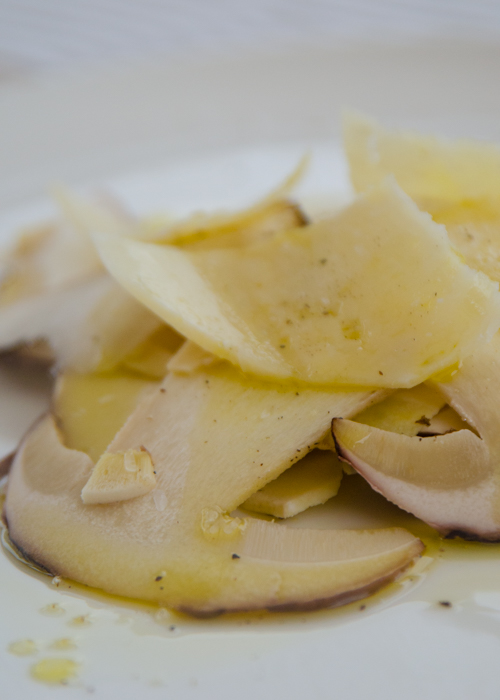 Mushroom hunting was once an important source of sustenance in many regions of Italy, from the Veneto to Tuscany to Umbria to Liguria. Many Italians today still forage wild mushrooms, with local communities in each region working to keep this tradition alive, sharing recipes for preserving the mushrooms and establishing rules for their picking. Our September cycling and
Mushroom hunting was once an important source of sustenance in many regions of Italy, from the Veneto to Tuscany to Umbria to Liguria. Many Italians today still forage wild mushrooms, with local communities in each region working to keep this tradition alive, sharing recipes for preserving the mushrooms and establishing rules for their picking. Our September cycling and 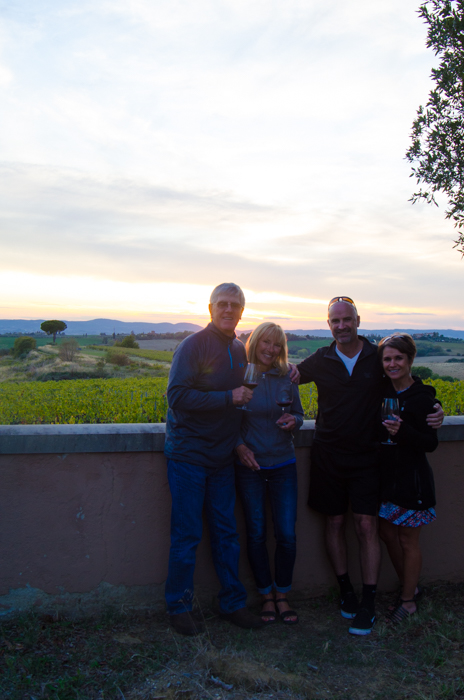
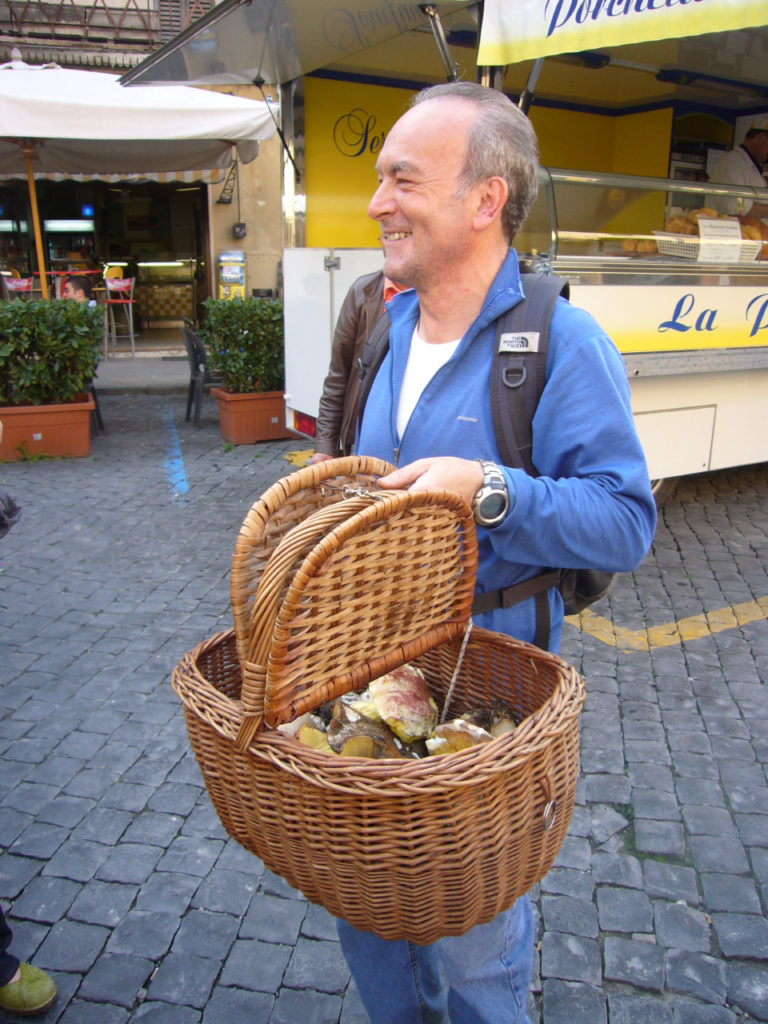 A few days later, porcini were at my local vegetable market, where I shop regularly and they are always very careful to select good products for everyone. They selected 4 porcini for me, and carefully checked each one for quality and worm holes by cutting a small slit in the bottom of each stem. They were perfect, pale and firm and beautiful.
A few days later, porcini were at my local vegetable market, where I shop regularly and they are always very careful to select good products for everyone. They selected 4 porcini for me, and carefully checked each one for quality and worm holes by cutting a small slit in the bottom of each stem. They were perfect, pale and firm and beautiful.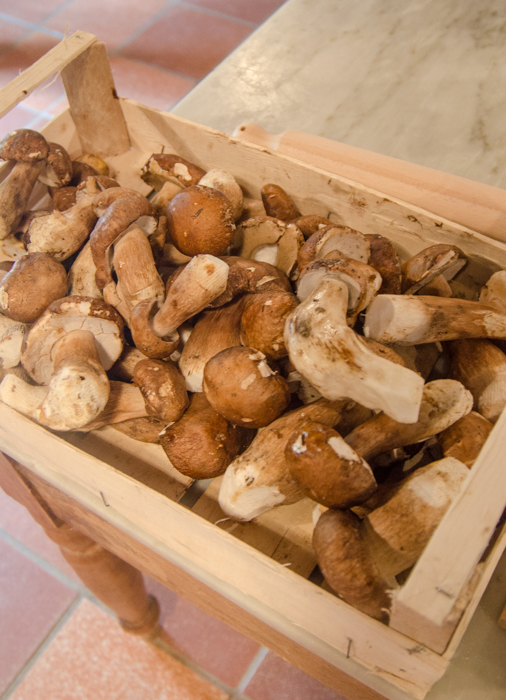
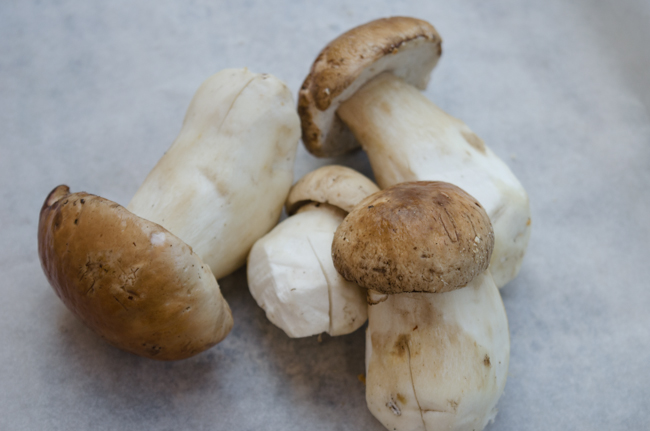 The following recipe is a classic, on the menu at many a trattoria in Tuscany in September. A few ingredients, perfect porcini mushrooms, cheese, and a wonderful local olive oil is all you need – a prime example of Italian cuisine, a few pristine ingredients, simply prepared.
The following recipe is a classic, on the menu at many a trattoria in Tuscany in September. A few ingredients, perfect porcini mushrooms, cheese, and a wonderful local olive oil is all you need – a prime example of Italian cuisine, a few pristine ingredients, simply prepared.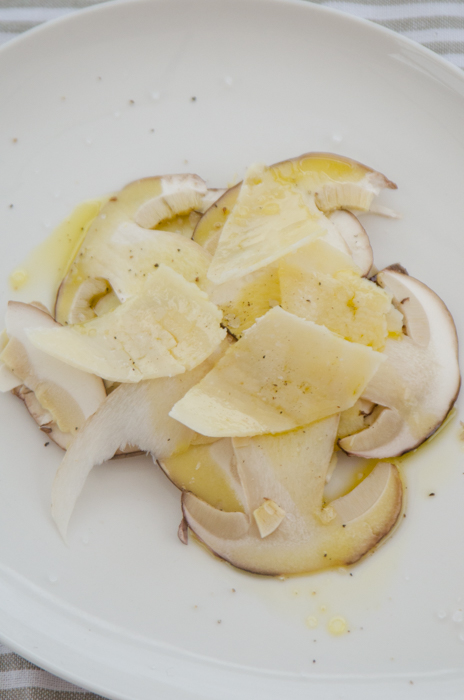
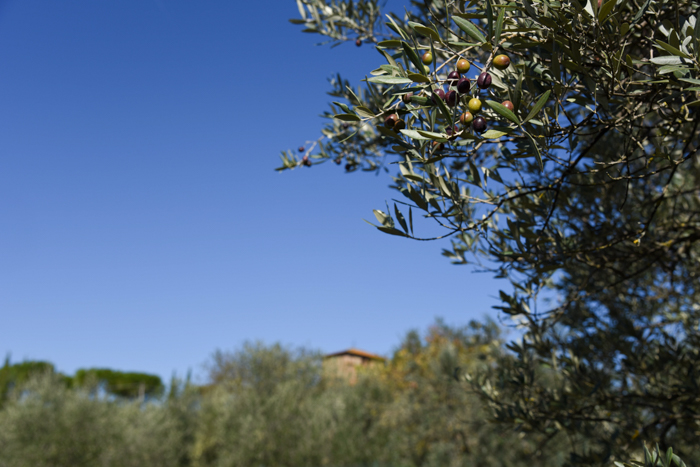 A key component to Tuscany’s wonderful cuisine is its delicious olive oil. Olive oil appears in almost every course; drizzled generously on bread, salads, tomatoes, vegetables, even on the famed
A key component to Tuscany’s wonderful cuisine is its delicious olive oil. Olive oil appears in almost every course; drizzled generously on bread, salads, tomatoes, vegetables, even on the famed 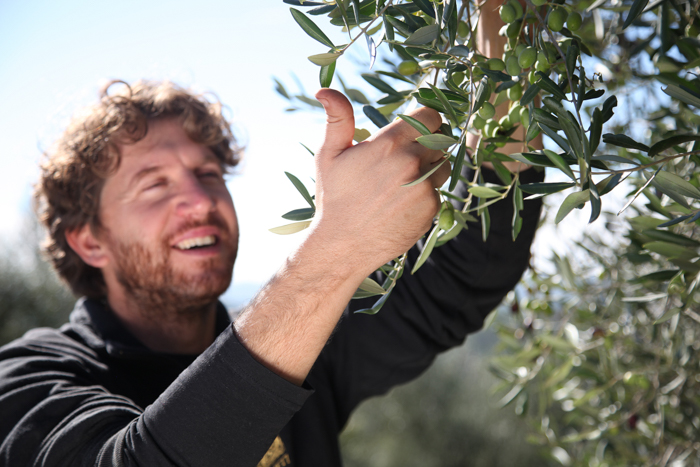 Just prior to a September
Just prior to a September 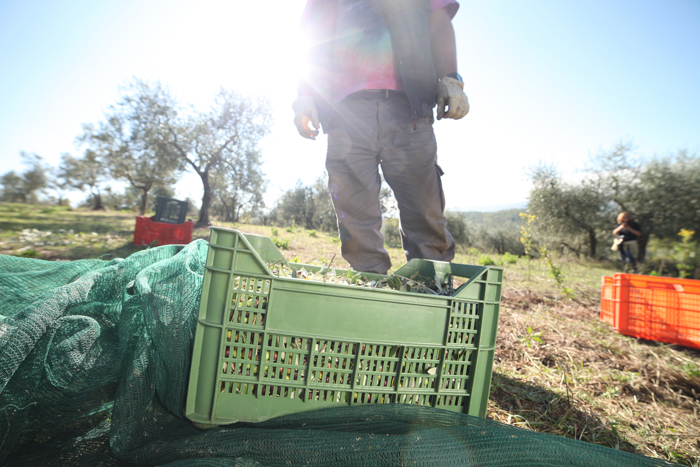 In 2008, the family built the current mill and tasting room. During my mid-September visit all was tranquil and quiet, but this is the calm before the storm. With harvest beginning in mid-October -perhaps earlier due to a very hot summer – the mill will be busy round the clock. Seventy or so seasonal workers are hired to harvest the olive crop. All harvesting is performed by hand, with workers combing through the olive trees, releasing the olives which drop into nets placed under the trees. The brothers decide daily which olives to harvest; this means identifying tree by tree which to pick as the different varietals and different orchards reach optimum ripeness at different times. Olives harvested on the early side provide grassy, spicy, bitter flavors; olives harvested later provide more fruity, smoother flavors.
In 2008, the family built the current mill and tasting room. During my mid-September visit all was tranquil and quiet, but this is the calm before the storm. With harvest beginning in mid-October -perhaps earlier due to a very hot summer – the mill will be busy round the clock. Seventy or so seasonal workers are hired to harvest the olive crop. All harvesting is performed by hand, with workers combing through the olive trees, releasing the olives which drop into nets placed under the trees. The brothers decide daily which olives to harvest; this means identifying tree by tree which to pick as the different varietals and different orchards reach optimum ripeness at different times. Olives harvested on the early side provide grassy, spicy, bitter flavors; olives harvested later provide more fruity, smoother flavors.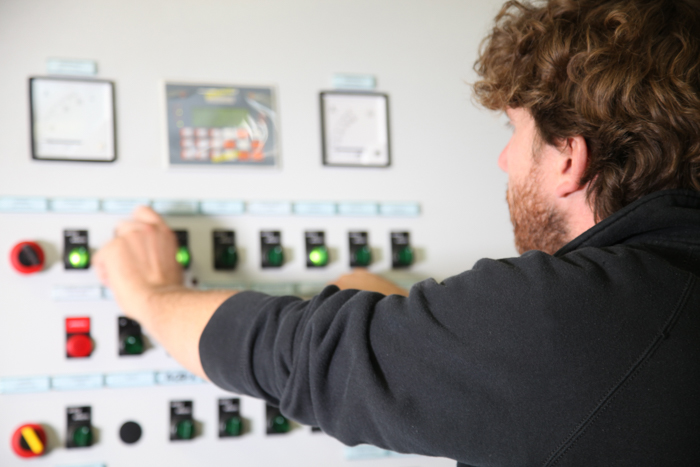 The olives arrive at the mill, and with the aim to produce the very freshest olive oil, the olives travel from orchard to press in only four hours. This means that brother Gionni, the “oil artisan”, doesn’t leave the mill much during harvest season. Much like an expert winemarker, Gionni continually monitors the pressing process, sampling and adjusting as the olives arrive. The press itself offers different settings, you can crush the olives with a hammer, cut them with a blade, or pass them through a disc using friction to break them. Gionni possesses the experience and palate to know which setting will best bring out the flavors he knows are hidden inside.
The olives arrive at the mill, and with the aim to produce the very freshest olive oil, the olives travel from orchard to press in only four hours. This means that brother Gionni, the “oil artisan”, doesn’t leave the mill much during harvest season. Much like an expert winemarker, Gionni continually monitors the pressing process, sampling and adjusting as the olives arrive. The press itself offers different settings, you can crush the olives with a hammer, cut them with a blade, or pass them through a disc using friction to break them. Gionni possesses the experience and palate to know which setting will best bring out the flavors he knows are hidden inside.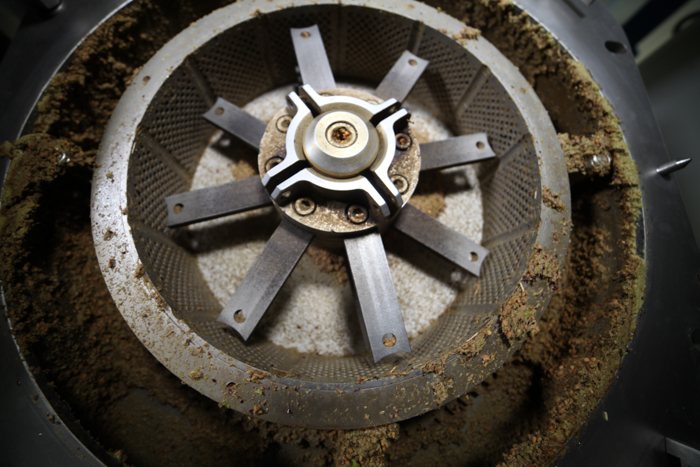
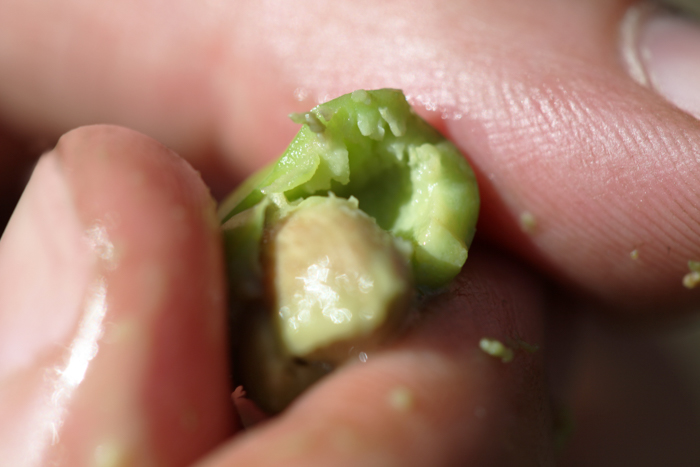
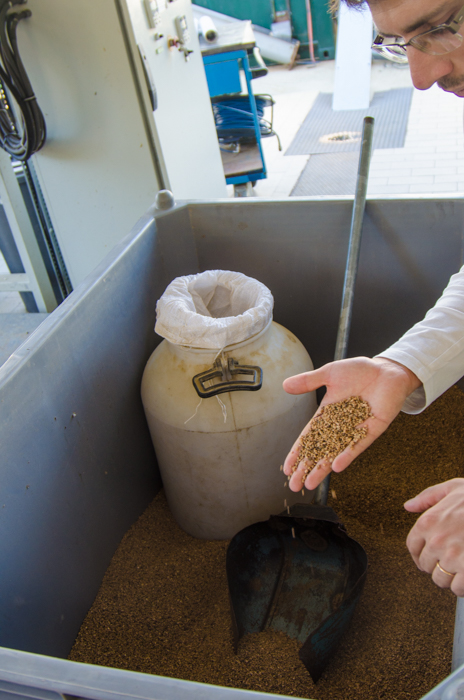
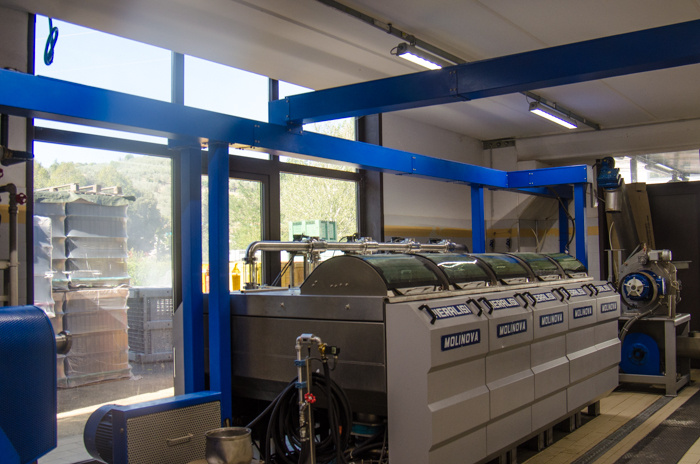
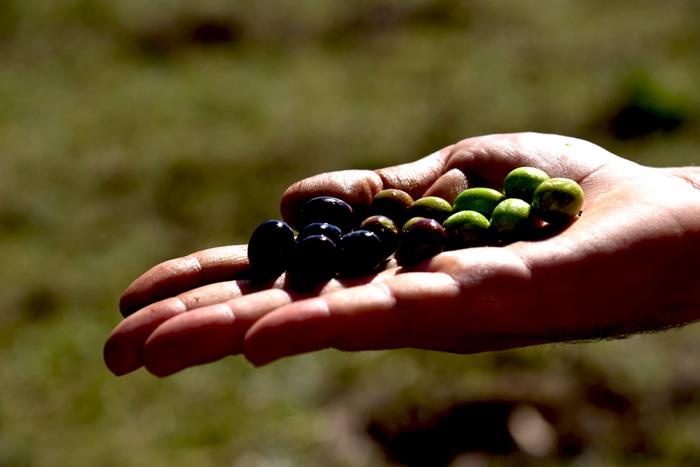
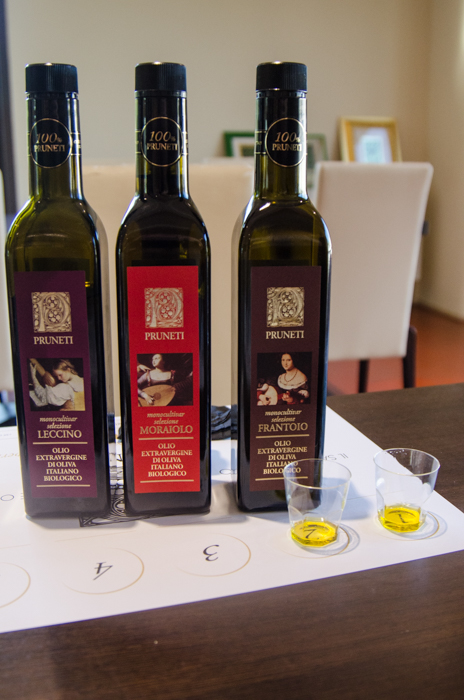 Leccino
Leccino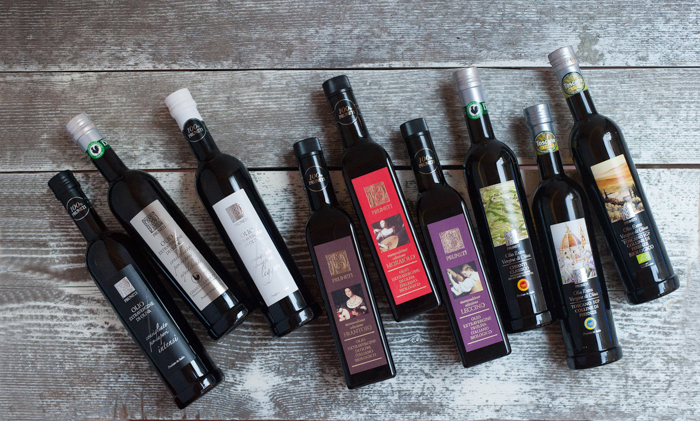
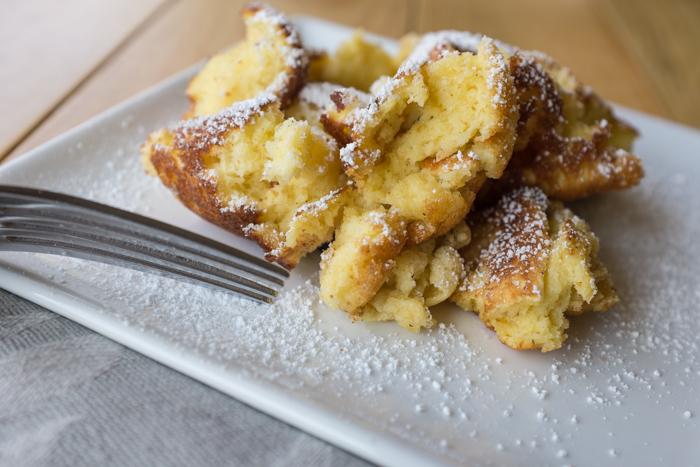 Late June and July is the best time to explore
Late June and July is the best time to explore 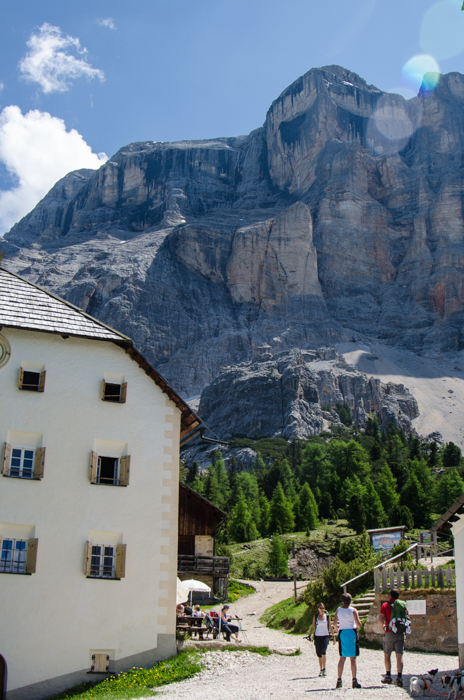 One of my favorite local dishes that reflects the areas Austrian roots is Kaiserschmarren. Kaiserschmarren is a light, eggy caramelized pancake, baked in butter. The pancake is split with two forks into pieces while frying, sprinkled with powdered sugar, and served hot with apples or plums or various fruit compotes. It can be enjoyed as a dessert, or it can also be eaten for lunch or an afternoon snack at most mountain rifugi in the Dolomites.
One of my favorite local dishes that reflects the areas Austrian roots is Kaiserschmarren. Kaiserschmarren is a light, eggy caramelized pancake, baked in butter. The pancake is split with two forks into pieces while frying, sprinkled with powdered sugar, and served hot with apples or plums or various fruit compotes. It can be enjoyed as a dessert, or it can also be eaten for lunch or an afternoon snack at most mountain rifugi in the Dolomites.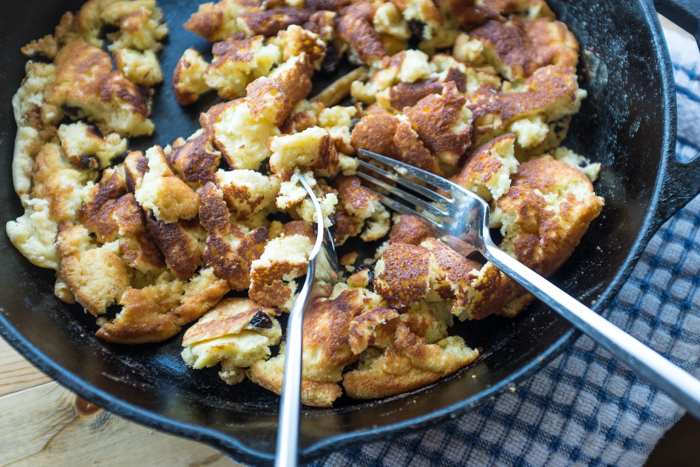 The name Kaiserschmarrn or Kaiserschmarren takes its name from the Austrian emperor (Kaiser) Franz Joseph I, who was reportedly very fond this treat, and served with jam was his favorite dessert. Schmarren refers to a scrambled or shredded dish, but is also slang for trifle, mess, or nonsense.
The name Kaiserschmarrn or Kaiserschmarren takes its name from the Austrian emperor (Kaiser) Franz Joseph I, who was reportedly very fond this treat, and served with jam was his favorite dessert. Schmarren refers to a scrambled or shredded dish, but is also slang for trifle, mess, or nonsense.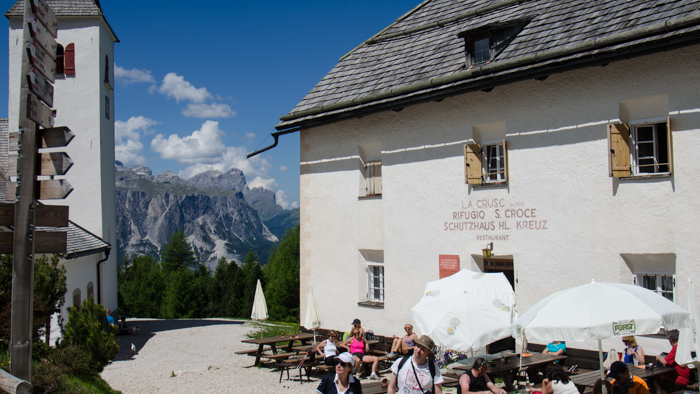 While it is generally agreed that the dish was first prepared for Kaiser Francis Joseph I, there are several anecdotes around its invention. One involves the Emperor and his wife, Elisabeth of Bavaria. Obsessed with her figure, the Empress directed the kitchen staff to prepare only light desserts, much to the consternation of her husband. Upon being presented with the chef’s confection, she found it too rich and refused to eat it. The exasperated Francis Joseph quipped, “Now let me see what ‘Schmarren’ our chef has cooked up.” It apparently met his approval as he reputedly finished both his and his wife’s serving.
While it is generally agreed that the dish was first prepared for Kaiser Francis Joseph I, there are several anecdotes around its invention. One involves the Emperor and his wife, Elisabeth of Bavaria. Obsessed with her figure, the Empress directed the kitchen staff to prepare only light desserts, much to the consternation of her husband. Upon being presented with the chef’s confection, she found it too rich and refused to eat it. The exasperated Francis Joseph quipped, “Now let me see what ‘Schmarren’ our chef has cooked up.” It apparently met his approval as he reputedly finished both his and his wife’s serving.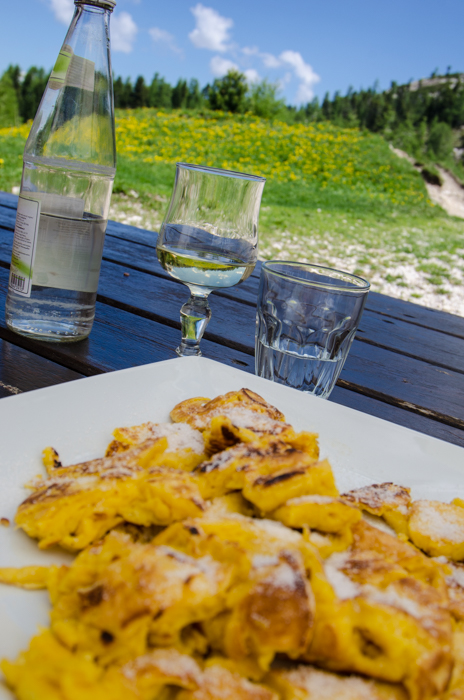 Another story is that Francis Joseph and his wife were traveling the Alps and stopped by a farmer’s home for lunch. The farmer was so nervous that he threw all the fanciest ingredients he had into a pan to make a delicious pancake; worse yet, due to his nervousness and shaky hands he scrambled the pancake. Hoping to cover up the mess he then covered it with plum jam. Luckily, the kaiser thought it was scrumptious.
Another story is that Francis Joseph and his wife were traveling the Alps and stopped by a farmer’s home for lunch. The farmer was so nervous that he threw all the fanciest ingredients he had into a pan to make a delicious pancake; worse yet, due to his nervousness and shaky hands he scrambled the pancake. Hoping to cover up the mess he then covered it with plum jam. Luckily, the kaiser thought it was scrumptious.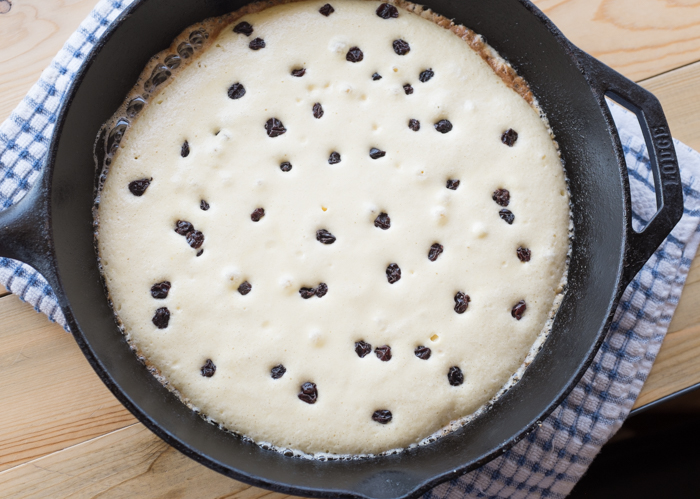 Kaiserschmarren can be prepared in different ways. Typically the egg whites are separated from the yolk and beaten until stiff; then the flour and the yolks are mixed with sugar, and the other ingredients are added. You can simplfy and just combined all the ingredients without separating the eggs, but the results will not be as fluffy. In the more traditional recipes only raisins are added, but now you can find versions that add nuts, cherries, plums, apple jam, or pieces of apple.
Kaiserschmarren can be prepared in different ways. Typically the egg whites are separated from the yolk and beaten until stiff; then the flour and the yolks are mixed with sugar, and the other ingredients are added. You can simplfy and just combined all the ingredients without separating the eggs, but the results will not be as fluffy. In the more traditional recipes only raisins are added, but now you can find versions that add nuts, cherries, plums, apple jam, or pieces of apple.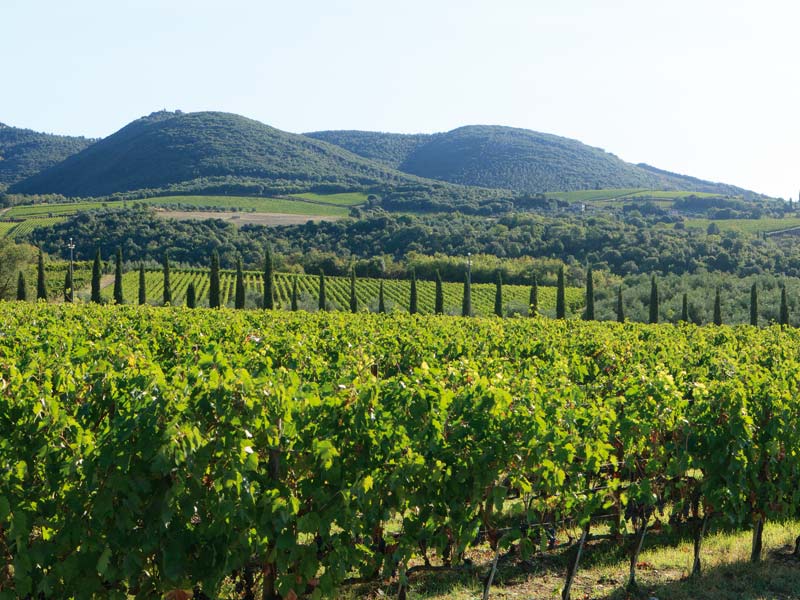 We are off next month on a
We are off next month on a 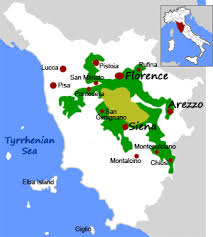 The Chianti regions – there are officially two, Chianti DOCG and Chianti Classico DOCG – lie in the Tuscan hills, in west-central Italy. The first mention of a Chianti wine region dates back to 1716, when Cosimo de Medici defined this wine zone. This original zone, today the Chianti Classico DOCG, shown in lighter green on the map, is a hilly area between the cities of Siena and Florence. You will see many of the villages in this original zone have appended their names with the ‘in Chianti’ designation, such as Greve in Chianti, Radda in Chianti, and Gaiole in Chianti.
The Chianti regions – there are officially two, Chianti DOCG and Chianti Classico DOCG – lie in the Tuscan hills, in west-central Italy. The first mention of a Chianti wine region dates back to 1716, when Cosimo de Medici defined this wine zone. This original zone, today the Chianti Classico DOCG, shown in lighter green on the map, is a hilly area between the cities of Siena and Florence. You will see many of the villages in this original zone have appended their names with the ‘in Chianti’ designation, such as Greve in Chianti, Radda in Chianti, and Gaiole in Chianti.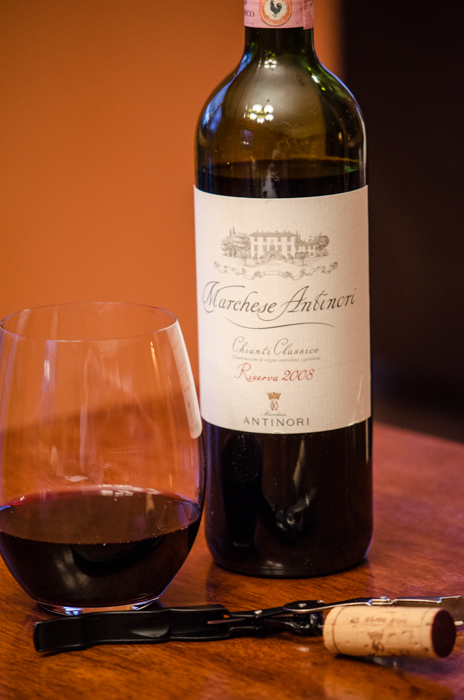 The Chianti DOCG, shown in darker green, surrounds the original Classico zone with fingers stretching in all directions. This region is divided into seven subzones, Colli Aretini, Colli Fiorentini, Colline Pisane, Colli Senesi, Montalbano, Montespertoli and Rufina. You will often, but not always, see the subzone identified on the label.
The Chianti DOCG, shown in darker green, surrounds the original Classico zone with fingers stretching in all directions. This region is divided into seven subzones, Colli Aretini, Colli Fiorentini, Colline Pisane, Colli Senesi, Montalbano, Montespertoli and Rufina. You will often, but not always, see the subzone identified on the label.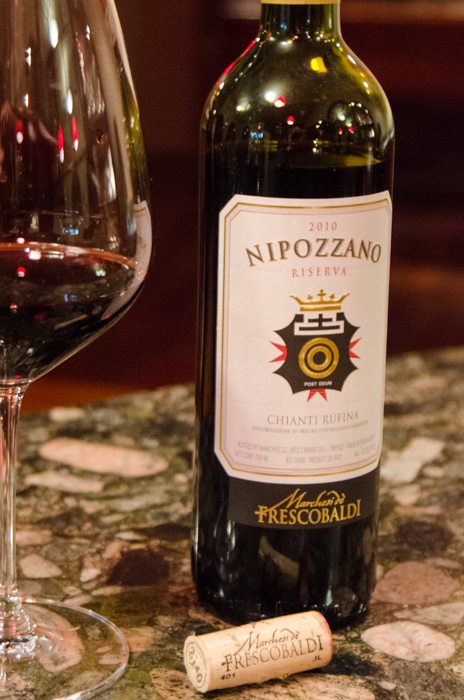 In the 1850s, a local landowner, Baron Ricasoli, declared his ‘recipe’ for Chianti, based on the native Sangiovese grape blended with 15% Canaiolo and 15% Malvasia Bianco. The Italian government voted this into law in 1966. As with many Italian wines, as international demand increased in the 1960s, Chianti producers increased production by utilizing lower quality grapes, ultimately flooding the market with inferior wines. These Chianti were packaged in the now well recognized squat bottle with a straw covering, appropriately called a fiasco.
In the 1850s, a local landowner, Baron Ricasoli, declared his ‘recipe’ for Chianti, based on the native Sangiovese grape blended with 15% Canaiolo and 15% Malvasia Bianco. The Italian government voted this into law in 1966. As with many Italian wines, as international demand increased in the 1960s, Chianti producers increased production by utilizing lower quality grapes, ultimately flooding the market with inferior wines. These Chianti were packaged in the now well recognized squat bottle with a straw covering, appropriately called a fiasco.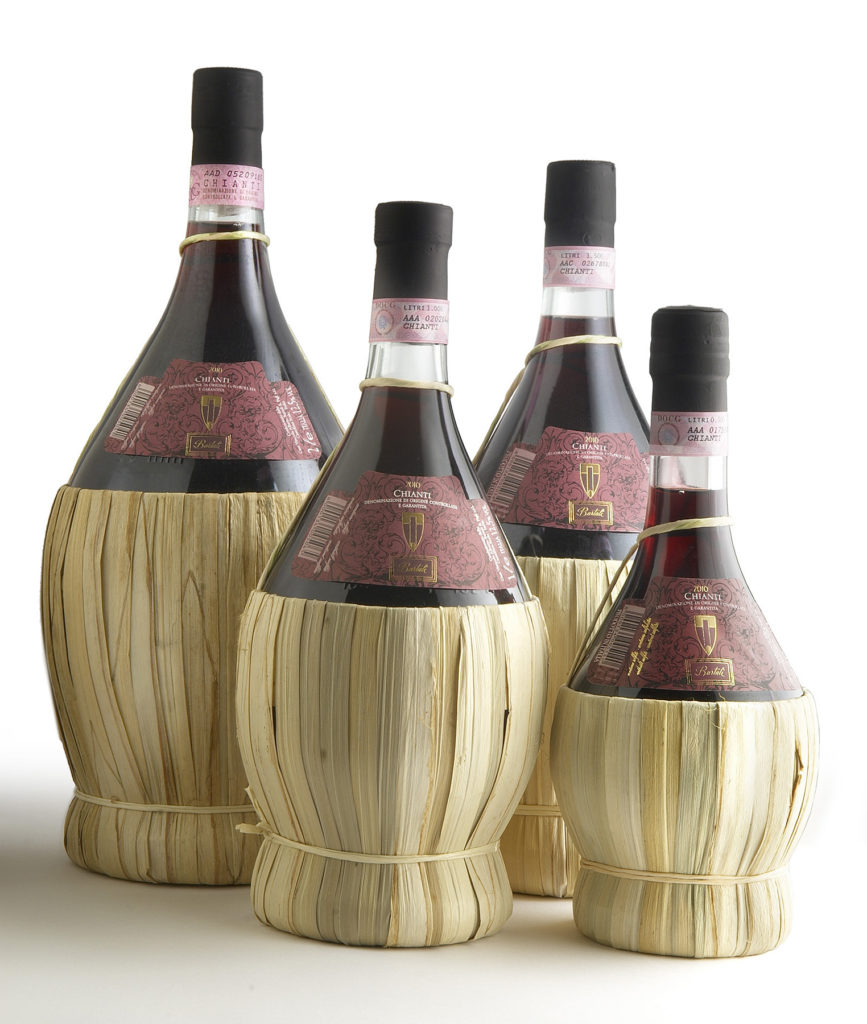 In the 1970s, new investors entered the area, with a renewed focus on quality production. In addition to investing in modern production facilities and new cultivation techniques, many of these new producers began experimenting with the traditional Chianti recipe, replacing the lower quality white grapes with international varietals such as Cabernet Sauvignon and Merlot. This new style of wine became quite controversial, as many viewed these as not ‘true’ Chianti wines. Today, the official definition of Chianti consists of at minimum 70% Sangiovese, with a maximum of 10% white grapes allowed. Permitted blending grapes are traditional native varietals such as Canaiolo and Colorino, as well as international varieties such as Cabernet Sauvignon and Cabernet Franc. Chianti Classico wines must be a minimum of 80% Sangiovese, with white grapes no longer allowed at all.
In the 1970s, new investors entered the area, with a renewed focus on quality production. In addition to investing in modern production facilities and new cultivation techniques, many of these new producers began experimenting with the traditional Chianti recipe, replacing the lower quality white grapes with international varietals such as Cabernet Sauvignon and Merlot. This new style of wine became quite controversial, as many viewed these as not ‘true’ Chianti wines. Today, the official definition of Chianti consists of at minimum 70% Sangiovese, with a maximum of 10% white grapes allowed. Permitted blending grapes are traditional native varietals such as Canaiolo and Colorino, as well as international varieties such as Cabernet Sauvignon and Cabernet Franc. Chianti Classico wines must be a minimum of 80% Sangiovese, with white grapes no longer allowed at all.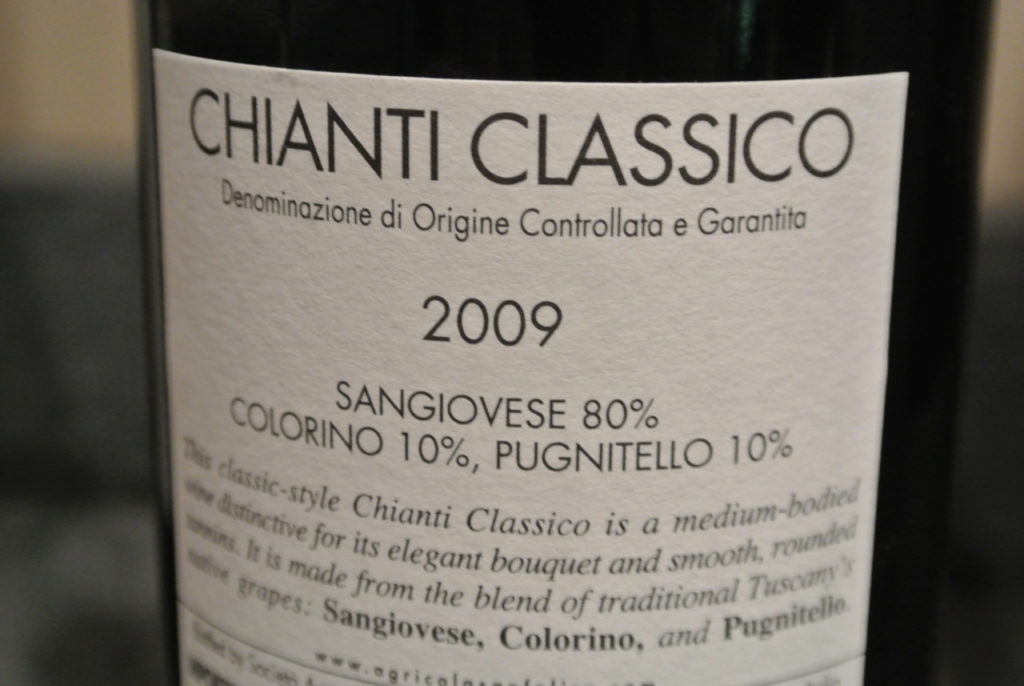 Aging requirements vary from subzone to subzone; the Riserva designation indicates a Chianti that has been aged for a minimum of 2 years (instead of 4-7 months). Chianti that meets even more stringent requirements on yield, alcohol content and dry extract, may be labelled as Chianti Superiore, although Chianti from the “Classico” sub-area is not allowed to be labelled as Superiore.
Aging requirements vary from subzone to subzone; the Riserva designation indicates a Chianti that has been aged for a minimum of 2 years (instead of 4-7 months). Chianti that meets even more stringent requirements on yield, alcohol content and dry extract, may be labelled as Chianti Superiore, although Chianti from the “Classico” sub-area is not allowed to be labelled as Superiore.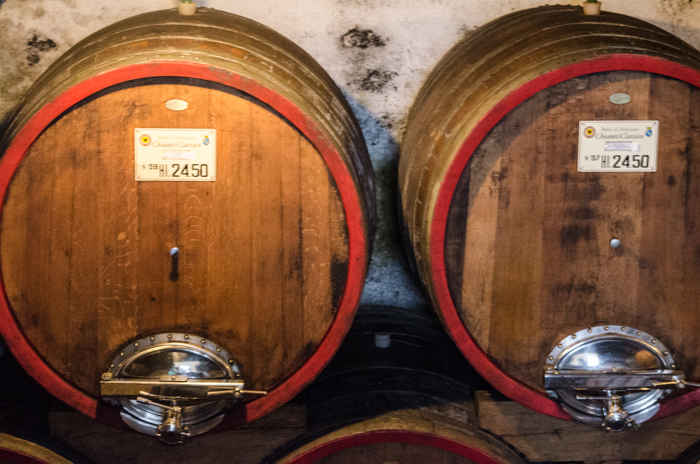 A Chianti bottle will often have a picture of a black rooster (gallo nero) on the neck of the bottle, indicating that the producer is a member of the Gallo Nero Consortium. This is an association of producers of the Classico sub-area that work together to jointly promote the Chianti brand. The ‘gallo nero’, a traditional figure denoting peace between long time rivals Florence and Siena, has been the emblem of the Chianti Classico producers association since 2005. Legend has it that in 13th century Florence and Siena decided to use a horse race to end their land dispute over Chianti. The meeting point of two knights, who had left respectively from Florence and Siena when the rooster sang at dawn, would mark the new border. The Florentines selected a black rooster and kept it for a few days in a box with no food. On the day of the race, when they took the rooster out of the box, he sang much earlier than dawn. Thus the Florentine knight left before the Sienese rider, meeting him only him only 20 km from Siena walls. Since then the black rooster has been the symbol of Chianti: first of the Chianti League in 13th century and then of the Chianti Classico Consortium.
A Chianti bottle will often have a picture of a black rooster (gallo nero) on the neck of the bottle, indicating that the producer is a member of the Gallo Nero Consortium. This is an association of producers of the Classico sub-area that work together to jointly promote the Chianti brand. The ‘gallo nero’, a traditional figure denoting peace between long time rivals Florence and Siena, has been the emblem of the Chianti Classico producers association since 2005. Legend has it that in 13th century Florence and Siena decided to use a horse race to end their land dispute over Chianti. The meeting point of two knights, who had left respectively from Florence and Siena when the rooster sang at dawn, would mark the new border. The Florentines selected a black rooster and kept it for a few days in a box with no food. On the day of the race, when they took the rooster out of the box, he sang much earlier than dawn. Thus the Florentine knight left before the Sienese rider, meeting him only him only 20 km from Siena walls. Since then the black rooster has been the symbol of Chianti: first of the Chianti League in 13th century and then of the Chianti Classico Consortium.